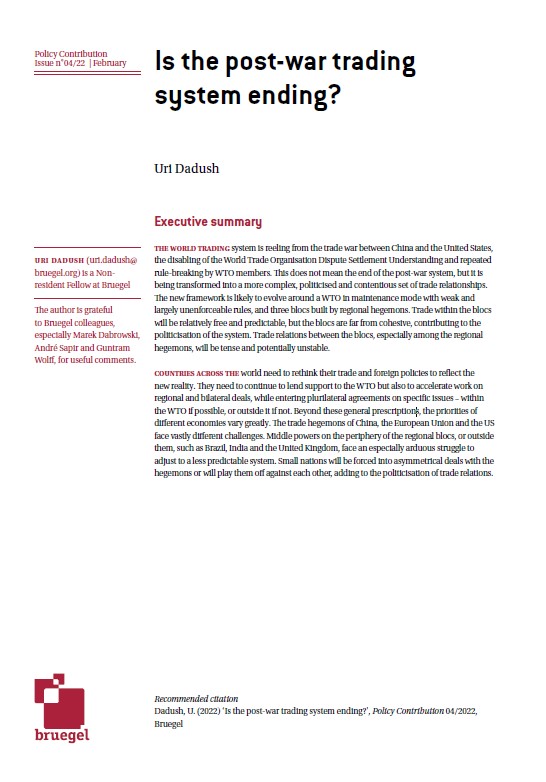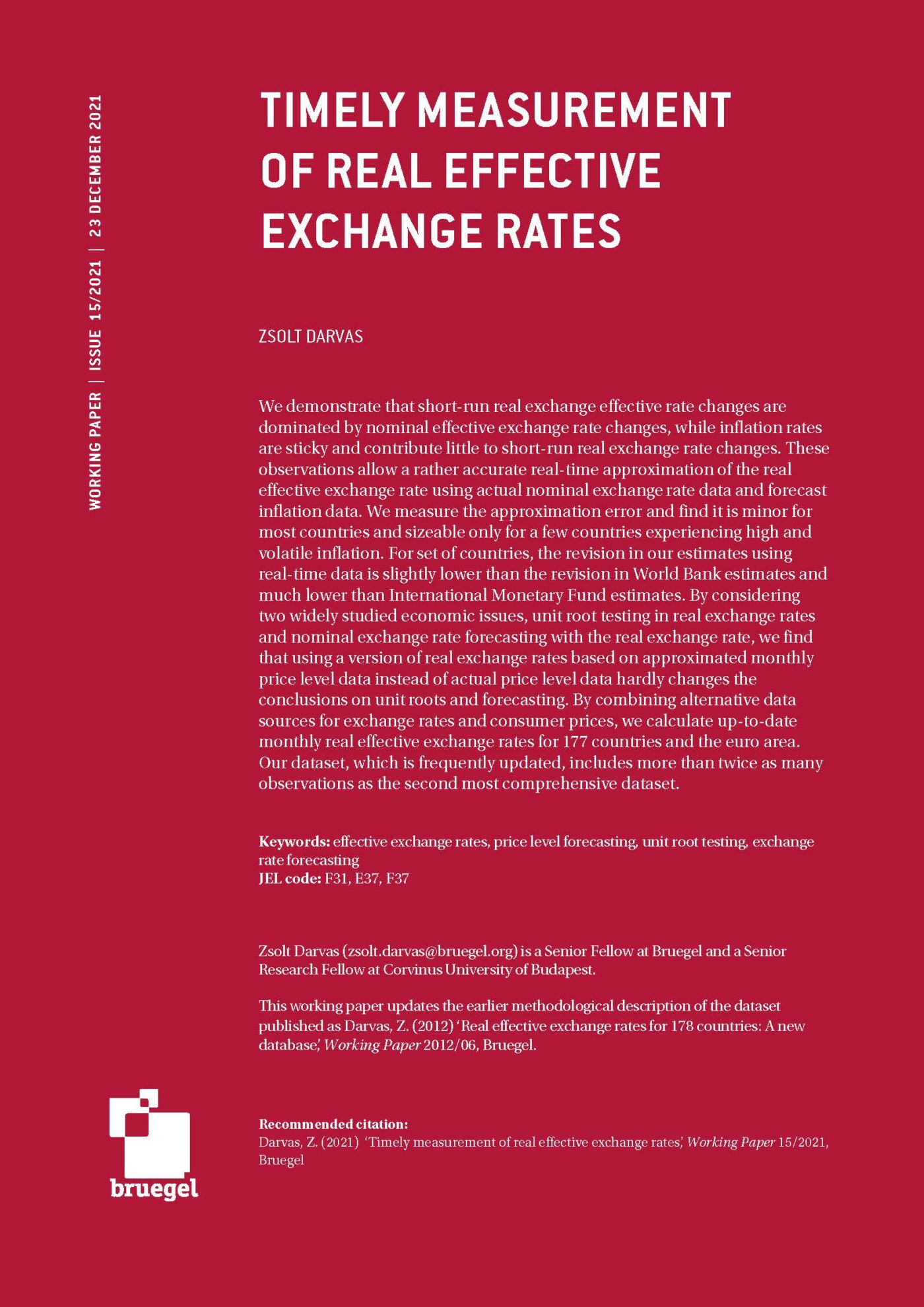Blog Post
The European Union with the Community of Latin America and the Caribbean: where do we stand?
Latin American and Caribbean countries have deep historical, political, cultural, and economic ties with Europe, and cooperation between the two regions has been intensifying recently. Here we report some of the main trends in trade, foreign direct investment, and agreements between the European Union and The Community of Latin American and Caribbean States, the European Union’s official counterpart in the bi-regional strategic partnership that commenced in 1999.
This blog post is also based on findings from the event “EU – CELAC Economic Forum – Channels for a joint future“.
The EU-LAC Foundation kindly supported the research behind these findings. The author is grateful to Inês Gonçalves Raposo and Lloyd Lyall for insightful discussions and comments.
Member countries of the Community of Latin American and Caribbean States (CELAC) constituted the fourth-largest trade partner for the European Union (EU) in 2016, combining for over 5.8% of extra-EU28 trade in goods, behind the United States (US), China, and Switzerland, albeit still representing a relatively small market, compared to the US and China. Similarly, the EU is CELAC’s third main partner and the second as an export destination. Their trade relationship has been broadly stable in terms of GDP (Figure 1) and it is inherently asymmetric, with mainly primary products flowing from CELAC to the EU, and manufactured goods going in the other direction. Historically, South America has had a more advantageous balance with the EU than Central America, Mexico, and the Caribbean. This trend has lately reversed, as the appreciation of the dollar and falling commodity prices caused a deterioration of terms of trade, especially in oil and derivatives. Overall, CELAC deficit with the EU has been increasing since 2012, driven mainly by weak export performance, even if there were signs of recovery in the first half of 2017.
Despite growing diversion towards China, the EU and CELAC’s trade flows have traditionally been very compatible, that is, products generally imported in CELAC are very similar to those generally exported by the EU, and vice versa. This could suggest large potential benefits of stronger economic ties between the two regions (Zerka et al., 2014). Nevertheless, for many CELAC countries, opening up might result in trade deficits, given relatively high import elasticity to income. In turn, those imbalances may be difficult to reverse by devaluation because of the relatively inelastic nature of CELAC exports; historically, trends have been reversed via economic contractions. Therefore, fully reaping benefits from more openness with the EU also requires diversification of CELAC’s exports (for example, by directing investment to the development of new business). Indeed, compatibility is more pronounced between EU exports and CELAC imports, rather than EU imports and CELAC exports (Figure 2), especially for South America and the Caribbean (in Central America and Mexico, the share of manufactured exports is higher than in the other regions).
In terms of trade in services, CELAC is the third largest partner for the EU, accounting for 7.3% of exported services and 12.1% of imported services, in 2015. Brazil alone accounts for 1.7% and 1.1% of those services, respectively. Overall, top EU partners were Germany, Netherlands, and France, while in the English-speaking Caribbean the UK has a major role, as well. Moreover, the EU recorded a surplus with most CELAC countries. In particular, large positive balances have been attained in commercial services other than trade and transportation, especially with South America, while deficits appear to be held with regions and countries specialized in specific sectors, like travel services in the Caribbean.
The EU accounts for more than half of foreign direct investment (FDI) investment in CELAC countries and it is particularly present in South America (Figure 3). However, in 2015 there has been a reduction of FDI inflows, possibly driven by falling commodity prices and weaker economic growth. Brazil and Mexico were the largest recipients of FDI from the EU in 2015, while the Netherlands and Spain were the largest investors in CELAC, even if values for the former might be partially driven by its intermediary role for transnational companies. Flows in the other direction have been expanding recently – a process initiated by European firms divesting assets to improve cash flows, later facilitating CELAC firms’ entry (Economic Commission for Latin America and the Caribbean – ECLAC – 2015) – but remain small by comparison. In the EU, the main recipients have been the Netherlands and Spain. In CELAC, most FDI flows to the EU originate in Brazil and Mexico.
The EU is expanding economic relations with CELAC countries and is active in negotiating a number of different agreements. According to the European Parliament’s DG-EXPO (2016), the rationale behind the EU’s engagement is support for regional integration, increasing competitiveness vis-à-vis the US and other main actors, and diffusion of its own regulations and standards, whereas the partnership with the Caribbean falls more under the scope of EU’s development policy rather than trade strategy. This is why the integration perspective was predominant over market losses to the US. However, the level of regional integration in CELAC is still not as high as for example, in the EU (Figure 4).
According to Cerra et al. (2016), a possible cause might be the relative disconnection across regions, due to geographical and infrastructural barriers (with substantial heterogeneity across countries). Gordon and Suominen (2014) argue that technical barriers and entry-trade costs are particularly binding for small firms in Latin American and Caribbean (LAC) countries. Hence, export markets are particularly concentrated, restraining development and business dynamics. Non-tariff measures are increasingly in play, mirroring global trends, especially for intermediate and capital goods, affecting the ability to enter regional value chains (IMF, 2017). According to ECLAC (2015), Central America and Mexico benefit from relative greater integration, also because of the nature of trade agreements with partners outside the region. Importantly, by allowing cumulation of origin within the region, trade in intermediates is particularly fostered, because inputs can be used in goods to export to those partners outside the region.
Currently, the oldest agreements (those with Mexico and Chile) are under a process of modernization, while negotiations between the Southern Common Market (MERCOSUR) and the EU resumed in 2016 after a few years of staleness and are currently ongoing (Figure 5). The main obstacles have been the reluctance on the EU side to open up to competing agricultural products, and on the MERCOSUR side to accept intellectual property rights. In general, the intensity and scope of the political dialogue between the EU and CELAC is subject to be affected by global factors, like the US’ withdrawal from trade agreements – which calls for new allies to be found – and the rise and increasing assertiveness of China – which is reordering global power play.
Republishing and referencing
Bruegel considers itself a public good and takes no institutional standpoint. Anyone is free to republish and/or quote this post without prior consent. Please provide a full reference, clearly stating Bruegel and the relevant author as the source, and include a prominent hyperlink to the original post.










